MG ZS EV vs Tata Nexon EV Max comparison review - the new order
The MG ZS EV is right in the sweet spot if you are looking for an electric SUV for the family. It's got 461 km of range, is spacious, feature-packed and drops below Rs 30 lakh.
But what if you don't want to stretch your budget this far? The Tata Nexon EV Max makes a good case for itself with its 437 km range. Yes, it's smaller but also a good few lakhs less and is not far behind with the gadgetry. So which is the better buy?
MG ZS EV vs Tata Nexon EV Max: Dimensions, styling
To be fair, without their EV powertrains these SUVs wouldn't have been direct rivals. But as it stands, they are your only two choices if you have between Rs 20 to 30 lakh to spare on an EV.
So the MG ZS EV is 330mm longer and 33mm taller than the Tata Nexon EV Max. MG doesn't state an overall width but exclude the ZS EV's mirrors and it's about as wide as the Nexon EV Max with them. These differences are easily apparent when you see the two SUVs together. The ZS EV has more presence and its brighter colour palette enhances this sense. The distinct face that separates the MG ZS EV from the Astor is another factor. The blanked-out face may not be to everyone's liking but it does help draw attention to this SUV's green credentials. Although we think the pre-facelift model did a better job of integrating the front-facing charge port. It's more practical to be sure but stands out in an otherwise cohesive look.
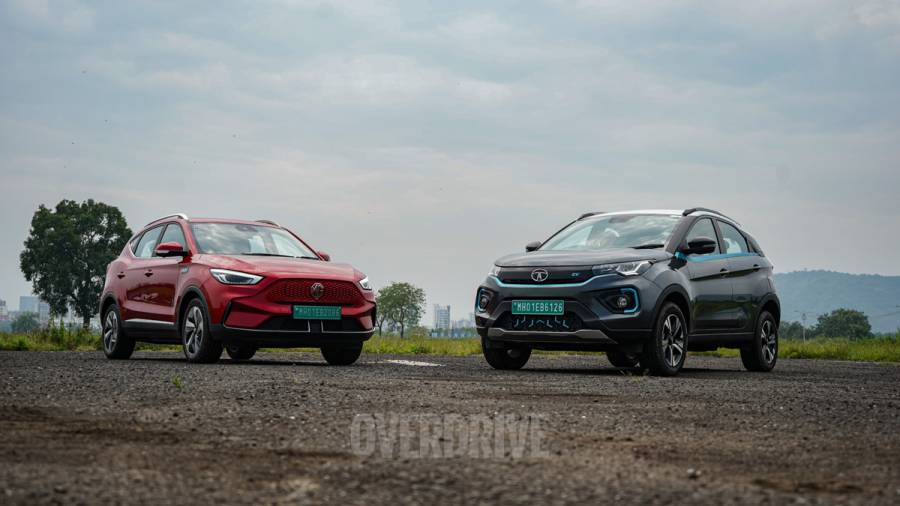
As for the Nexon EV Max, it continues to be the generally well-proportioned and stylish SUV it's always been. To Tata Motors' credit, the Nexon still looks contemporary despite being around as long as it has, the well-judged facelift that brought with it the sharper look helping immensely. But there is no visual distinction between the Max and other variants of the Nexon EV which is a downer. That said, the Tata does a fair job of putting forth its green credentials in a subdued but maybe more generally acceptable way with its blue highlights and tri-arrow motifs. Another distinction is the sharp LED lighting of the ZS EV which adds a touch more sophistication, compared to the projector lighting in the Nexon EV Max.
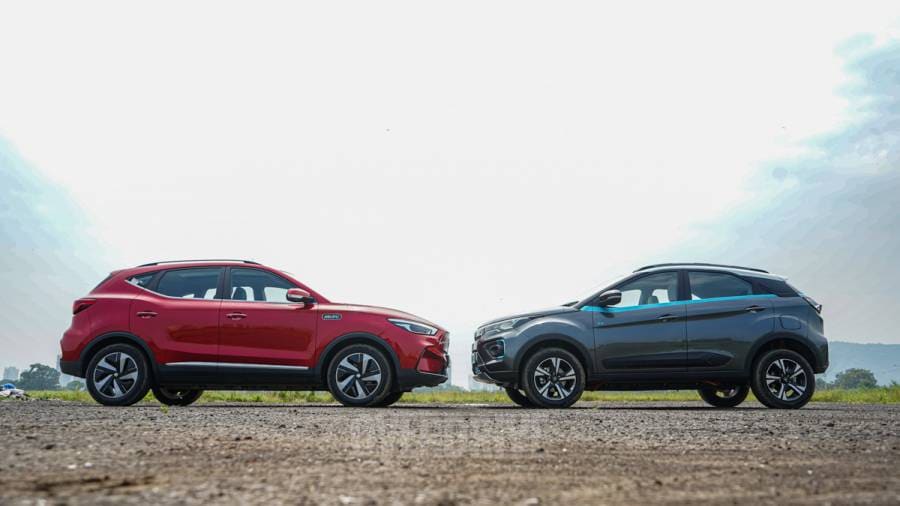

The ZS EV sits on 17-inch wheels which give it a more proportionate look in profile, again the aero-covers go a touch further than the Nexon EV's smart but traditional alloys to highlight the MG's green image. The fuller shapes and sharper glass house of the MG also help draw eyeballs but it must be said that the more subdued lines and contrasting belt-line do a good job with the Nexon. So between the two SUVs here, most tastes are catered to.
MG ZS EV vs Tata Nexon EV Max: Interiors, space, features
Step inside the MG ZS EV, and it's quickly clear where you've spent the added money. The cabin feels every bit the SUV's price, if not better. There are soft materials on the dashtop as well as in the door cards and centre console. This is further enhanced by the rich-looking carbon-fibre patterns, the more substantial feeling switchgear as well as the general design of the space with its rotary-style vents, the tasteful silver accents and contrast stitching. The all-black theme here may not be to everyone's liking but MG does offer a lighter ivory option for Rs 11,000 more. But that might take a bit more maintenance.
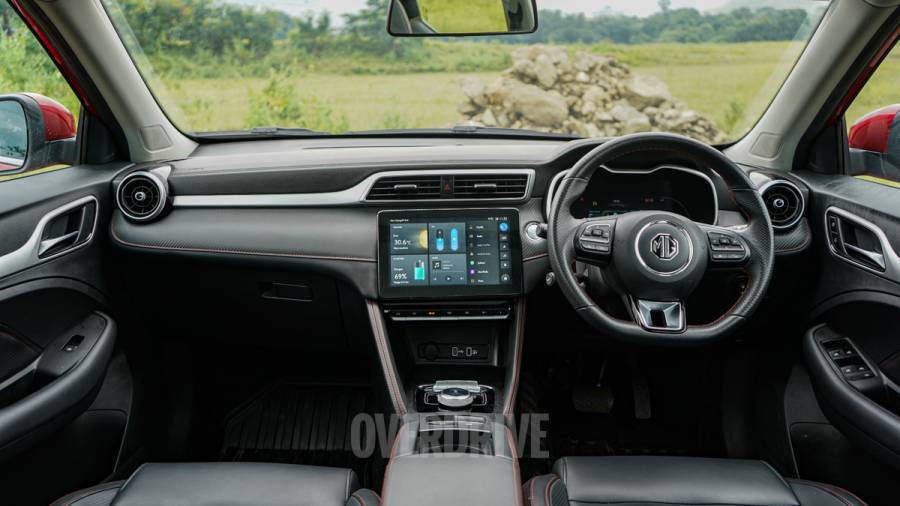
Not surprisingly, the Nexon EV isn't quite as plush as this. Soft surfaces are limited to the armrests and doors while the plastics and switchgear feel less solid. But again, few cars match up to the reassuring thunk of a Tata and the Nexon EV too has that in spades. And given the lower costs involved, Tata Motors has done a fair job of uplifting the Nexon EV Max's cabin. The look inside isn't especially flashy like the outside but you have a clever use of gloss black materials that contrasts the lighter shade. The new rotary dial shifter with its slick graphics is easily the centrepiece of this cabin, well tempered by the faded blue motifs of the dash and around the vents.

The MG has the space advantage with its wider footprint and 87mm longer wheelbase. The seats are wider and front passengers won't have their arms brushing against each other, unlike in the Nexon. The ZS EV is also good for three at the back with its wide bench, fully flat floor and great knee and leg room. The Nexon EV is best for two adults but it must be said that the Tata has the edge in terms of under-thigh support with the extended squabs, despite the typical EV trait of high floorboards in both. The seatbacks for all four passengers are better contoured here so longer journeys may be more comfortable. Some might even prefer the more reclined position of the Tata's rear seatback.
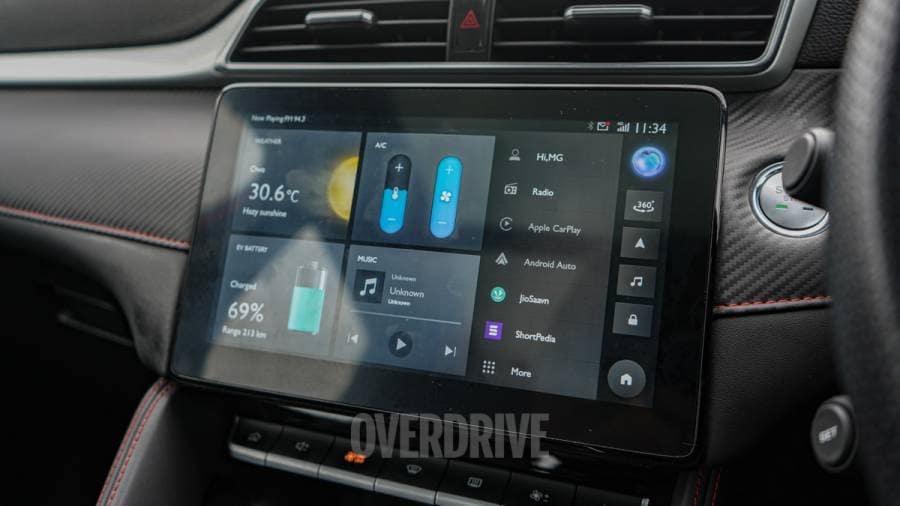
The ZS EV again has an edge in terms of practicality and features. The 10.1-inch touchscreen is easier to use both in terms of its placement and its general user interface. The 7-inch unit in the Tata is too far away from you and isn't the slickest in terms of its functionality. The MG ZS EV also presents information succinctly in its digital instrumentation, we've never been big fans of this part-digital cluster that Tata Motors puts in its more premium offerings with the quite plain speedometer and small gauges and tell-tale lights.
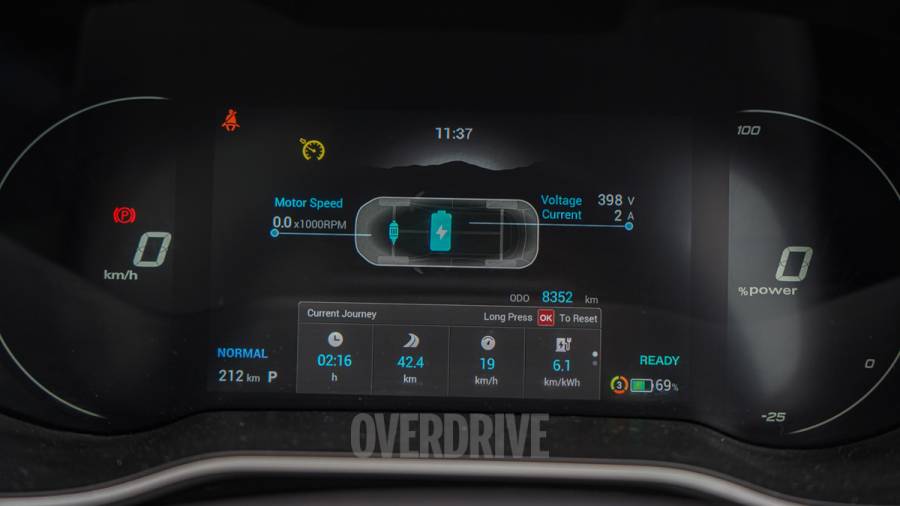
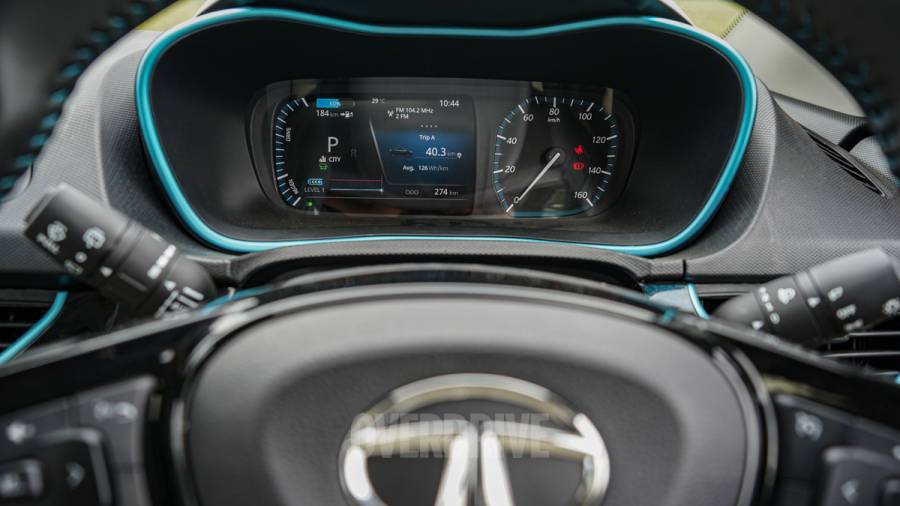
A big caveat here is that it's the Nexon EV that is more reliable with its range estimates, it'll change the estimate depending on not just the drive modes like in the ZS EV but also with each regen level you choose. Even the range display, the most important stat that you should be aware of, is more prominent in the Nexon EV. It's the same with drive mode and regen level indicators which are weirdly the smallest icons on the ZS EV's screen.
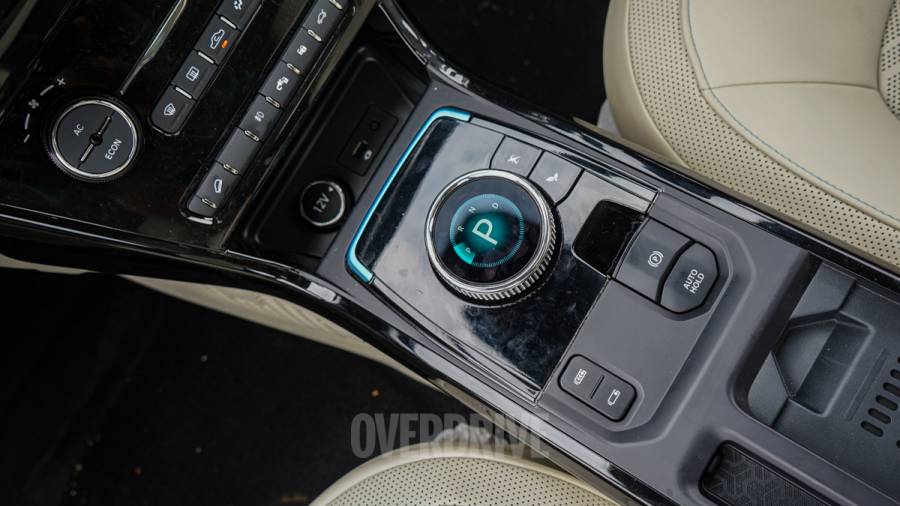
The Nexon EV Max also has more intuitive physical controls for the climate menus and better-placed switches for the regen and drive modes. But this has come at a price. There are no cup holders or significantly large storage spaces in the centre console, quite unlike the ZS EV which also places the wireless charger thoughtfully. The MG further has two USB charge ports in the front as well as larger door pockets. It's the same with the rear seat, where the Nexon EV Max only gets an awkwardly placed 12V outlet near the left C-pillar, the MG getting two more ports.
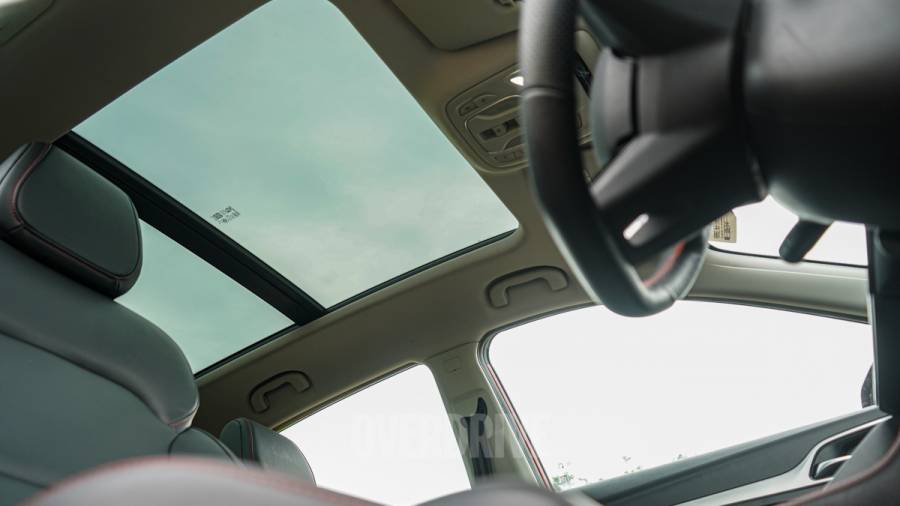
The MG scores with the big ticket features like a panoramic sunroof, powered driver's seat and connected tech. But Tata Motors has been smart and offers what may be equipment you will appreciate over a long ownership experience like the quite effective front ventilated seats, an auto-dimming rear-view mirror and the useful charger lock button. The Tata only gets a single-pane sunroof but both get auto headlamps and wipers, cruise control, climate control(far more effective in the Tata) and tilt steering adjustment.
MG ZS EV vs Tata Nexon EV Max: Battery, real-world range, charging
The MG ZS EV gets a larger battery pack with this update, growing from 44.5 kWh to 50.3 kWh. The one in the Tata Nexon EV Max is notably smaller at 40.5 kWh but quite a bit larger than the 30.2 kWh of the standard Nexon EV. Having said that, there's less of a gap in the two SUVs ranges.
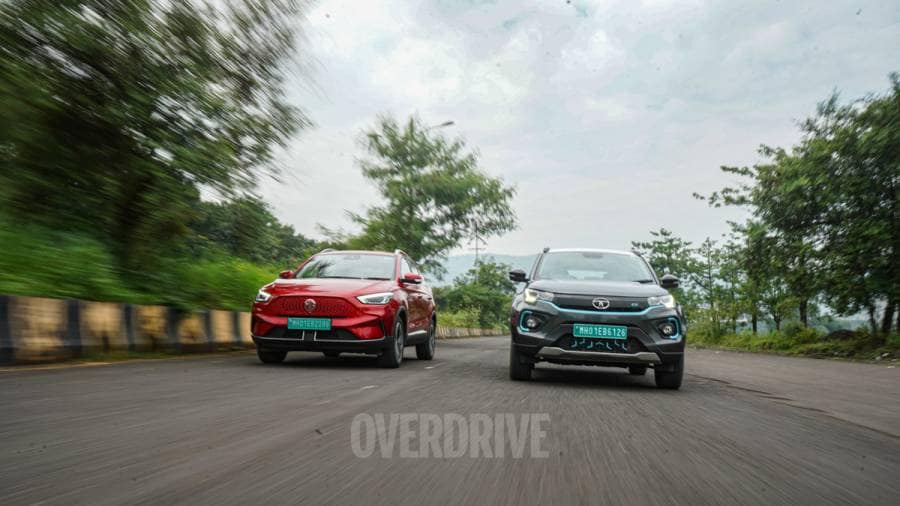
In our real-world range testing, we managed 390 km from the MG and 355 km from the Nexon EV Max in city driving. Both were driven on the same route in the Eco mode and highest regen levels. The Nexon was more efficient with its 8.8 km/kWh figure, the ZS EV a bit behind at 7.7 km/kWh. There's a smaller gap in highway driving, the ZS EV managing 342 km at 6.8 km/kWh while the Tata doing 299 km at 7.4 km/kWh. The lighter weight and more aggressive regen help the Nexon EV Max seemingly while the ZS EV's better outputs maybe keep it less stressed at highway speeds.
Both EVs here can charge at up to 50 kW DC fast charging speeds, a fairly quick rate given their middling battery sizes. In DC charge times, both are nearly at par surprisingly despite the Nexon's smaller battery. The Tata takes 56 minutes and the MG 60 minutes. Both take charge similarly with the more regular AC charging you will use with 7.4 kW for the MG and 7.2 kW for the Tata. The former takes up to 9 hours and the latter a much quicker 6.5 hours given the smaller battery size. Maybe MG could offer an 11 kW option in the future.
MG ZS EV vs Tata Nexon EV Max: Driving impressions, performance
The MG ZS EV has seen a fair bump in power with this update, a 36PS increase to 179PS while torque has dropped by 70 Nm to 280 Nm. The Tata Nexon EV Max too has 13PS and 5 Nm more than the standard one at 143PS and 250 Nm. It's no surprise then that in outright acceleration the ZS EV is a brisk car with its 0 to 100 kmph time of 7.5s. The Max is notably slower at 8.8s but to put it in context, it'll still blitz anything this side of a diesel Tucson.
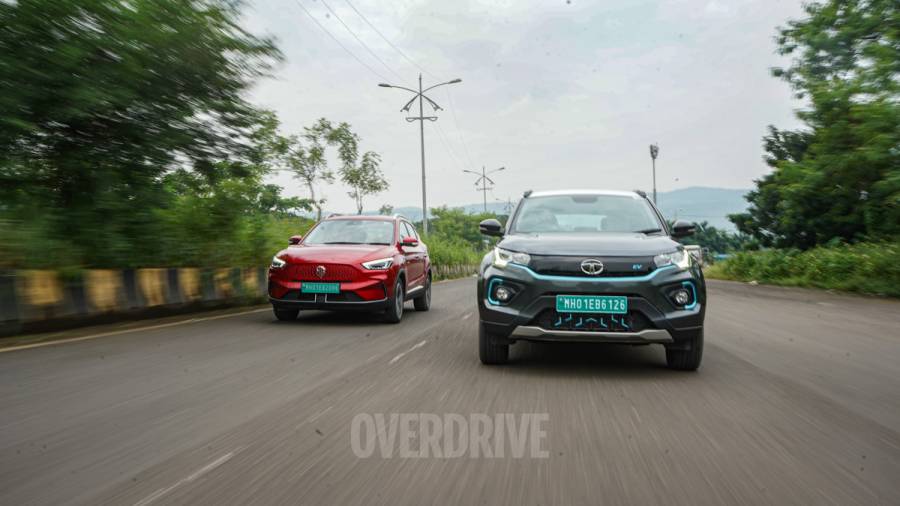
A point to note though is that it's easier to access this performance in the ZS EV. The drop in torque has quelled torque steer, which the Nexon EV Max still suffers to some extent from in such situations. Also, the full performance is available in all three drive modes(Eco, Normal, Sport). The Nexon EV Max will give you reduced outputs in the Eco and City modes, the full performance available only in Sport.
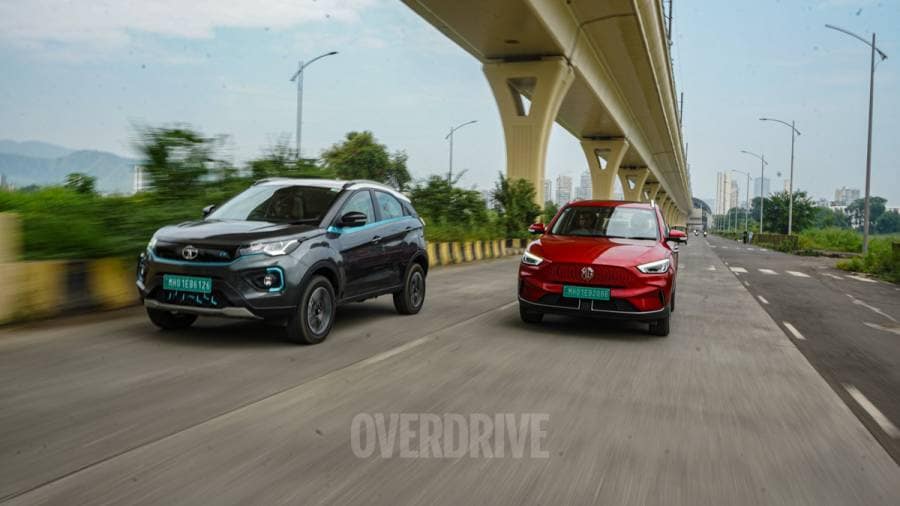
In both SUVs, you feel a distinct change in throttle response going through the modes, although even in the most conservative modes, the two are perfectly capable of keeping up with traffic. There's always enough performance to pass slower cars or fill in gaps. If anything, the ZS EV does have a more precise throttle pedal, and the switchover to regen is a bit more apparent under your right foot. In either case, overtaking performance in both is about as potent as anything else on the road with both dropping below 2s in all three of our testing ranges. An added positive with the Nexon EV Max is its stronger regen in the highest of the three modes that both SUVs come with. Neither gets one-pedal driving but the Tata slows right down to a 10 kmph crawl that is more useful in stop-go traffic, unlike the roughly 20 kmph of the MG. You get an additional coasting mode in the Nexon EV Max which could be useful on the highway, although both could have done with paddles for better access to switching between the regen levels.

MG ZS EV has a more natural driving position. It's got a light steering with great visibility but we wish it was better tuned for Indian conditions. The steering feels inconsistent in its weight in all the modes which takes some confidence away. Also, we wish the MG handled bumps and potholes more cleanly. These are quite apparent in the cabin at low speeds and make our pockmarked city streets uncomfortable sometimes. The high 41 PSI recommended tyre pressure, possibly to reduce rolling resistance, exaggerates this trait. The firm damping but generally soft suspension set-up does make higher-speed driving more comfortable but the flipside is that the ZS EV wallows over undulations a bit more. But the MG keeps wind and tyre noise at bay, so easily noticed with these EVs, much more effectively in these situations.
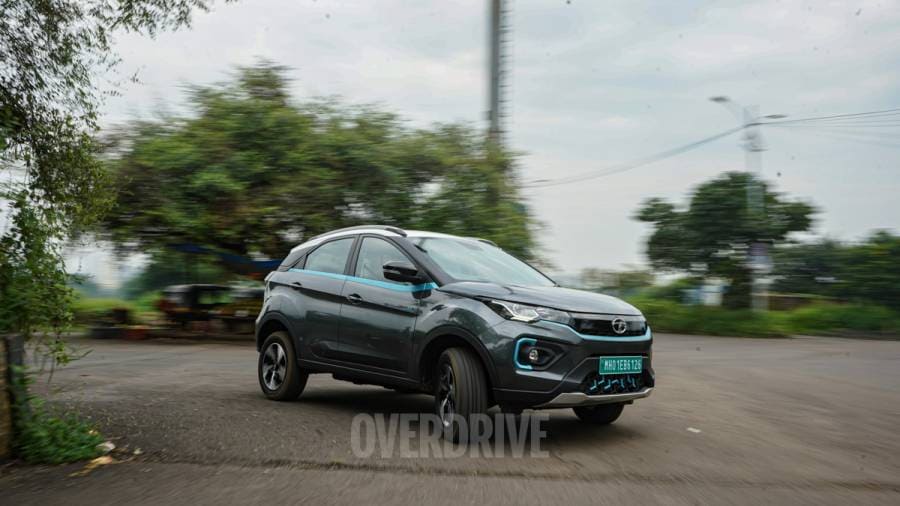
The Nexon doesn't quite have the same expansive view out and the driving position could be less awkward with the steering wheel jutting out at an uncomfortable angle. But it is smaller which makes it more manageable in tight traffic. The steering is more consistently weighed which makes a big difference but most impressive is the ride quality. The Tata feels substantial and aside from the slightly firm low-speed ride you find in EVs, does a great job over imperfections. There's a soft edge to whatever you feel which goes well with the soothing EV powertrain. It's also quite a nice handler, with much better-manged body movements and a reassuring sense of control coming through at all times.
The Nexon EV Max also has better feel through the brakes with a more progressive pedal but the ZS EV is significantly better at actually pulling you to a top in tense situations, although in regular driving, pulling to a smooth stop needs some practice with the initial dead-spot in the pedal.
MG ZS EV vs Tata Nexon EV Max: Safety
In this sense, the MG ZS EV has a clear edge. The Tata Nexon EV Max hasn't been tested yet nor has the MG ZS EV in its newest form, but both are based on 5-star rated ICE platforms. The ZS EV does better with its features offering six airbags, 360-degree cameras, blind-spot monitoring, rear-cross traffic alert and lane-change assist. You even get rear-seatbelt warnings, a great addition given the current discourse on the matter.
The Nexon EV Max makes do with two airbags and a single rear camera. Both get TPMS and a useful hill descent control function along with stability control.
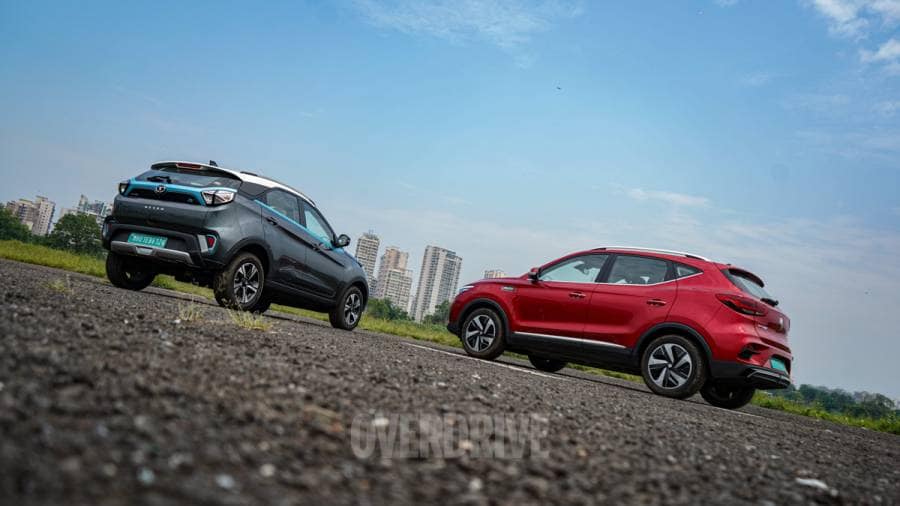
MG ZS EV vs Tata Nexon EV Max: Price, verdict
The Tata Nexon EV Max costs Rs 21.07 lakh while the MG ZS EV costs Rs 28 lakh. The Rs 7 lakh gap may seem vast but effectively you have two capable EVs at both ends of a price range. Your budget might be a big factor but either will suffice as a great urban commuter that keeps range anxiety at bay. Pick the MG ZS EV if you like the space, features and generally plush ambience or chose the Nexon EV Max for its driving dynamics or efficiency. It's sheer value putting it just ahead.
MG ZS EV vs Tata Nexon EV Max: Scores
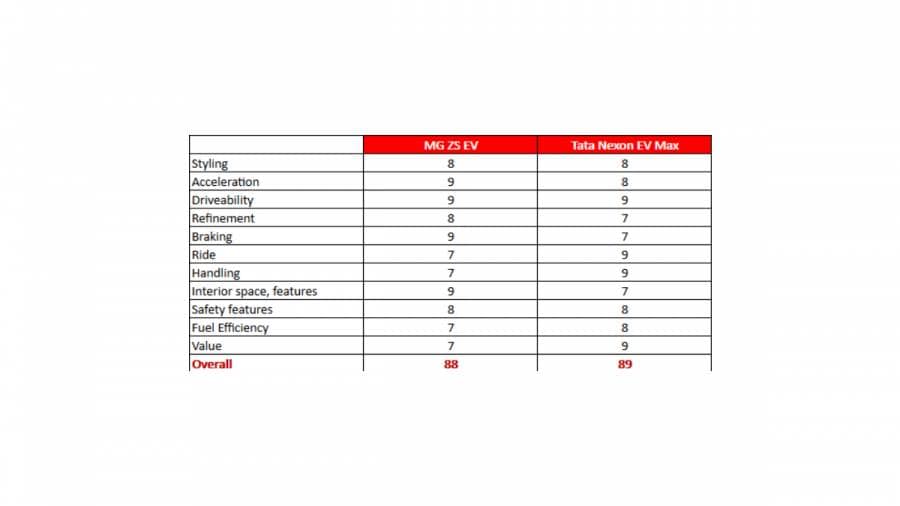
MG ZS EV vs Tata Nexon EV Max: Real-world mileage, performance
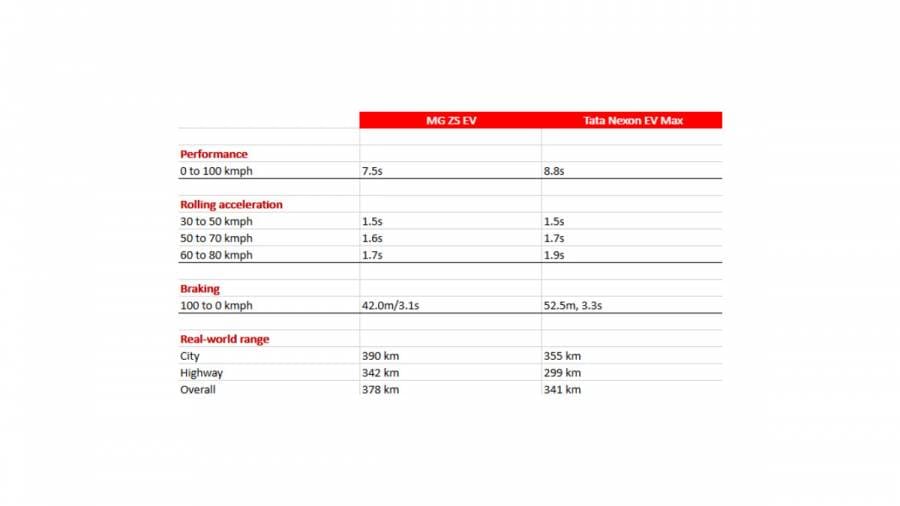
Also read,
2022 MG ZS EV road test review
2022 Tata Nexon EV Max review, road test
Starts Rs 13.99 Lakhs
-NA-
Automatic
129
245
-NA-
Starts Rs 6.95 Lakhs
1497cc
Automatic
110
260
21.5 Kmpl
Starts Rs 22 Lakhs
-NA-
Automatic
176.75
280
-NA-
Starts Rs 17.74 Lakhs
-NA-
Automatic
143
250
437 Kmpl
-NA-
1796cc
Automatic
160.4
215
12.82 Kmpl














